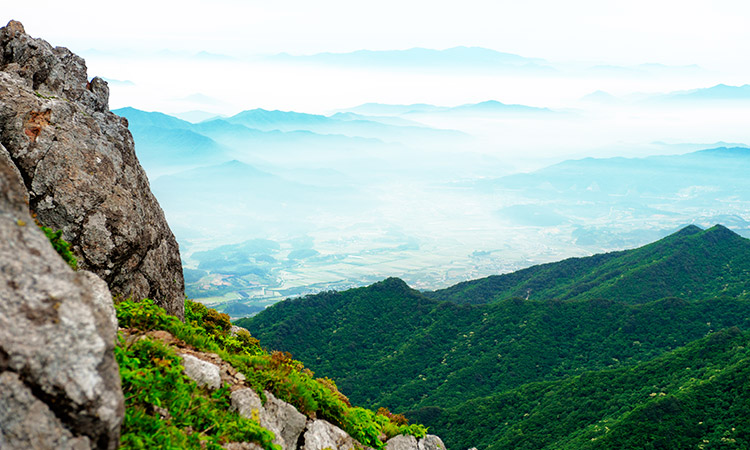Natural Environment
Muju-gun whose whole area belongs to the mountain area of the Sobek Mountains embraces a series of high mountains, such as Mt. Minjuji (1,242m), Mt. Daedeok (1,290m), Mt. Deokyu (1,614m) and Mt. Jeoksang (1.034), which are higher than 1.00Cm above sea level. Especially, ML Jeoksang presents a spectacular view while being surrounded by the rocky cliffs in all directions. Besides of them, since magnificent beautiful views including the 33 Scenic Spots of Gucheon-dong stand in a continuous row, the huge number of tourists visit the region without a cease during the four seasons.
Cultural Landscape
Here and there in the region, there are many enlivened historical sites symbolizing the defense of the fatherland, such as the site of Jugae Fortress, which was the county fortress of Jeokcheon-hyeon during the era of Baekjae Kingdom, the site of Musan Fortress of Silla Kingdom, Mt. Jeoksang Fortress where there was a Saga having kept the historical chronicles, Gucheon-dong where many voluntary soldiers (Uibyeong Armies) used to fight against the Japanese armies whenever Japan invaded into the country during lmjinwoeran (Japanese Invasion to Korea in 1592) and in the late Vi Dynasty, the memorial tombs of voluntary soldiers, Chilyeon Uichong’, etc., as well as the Rajetongmun, which played as a boundary tunnel between Baekjae and Silla kingdoms during the era of Three Kingdoms.







